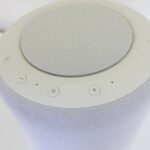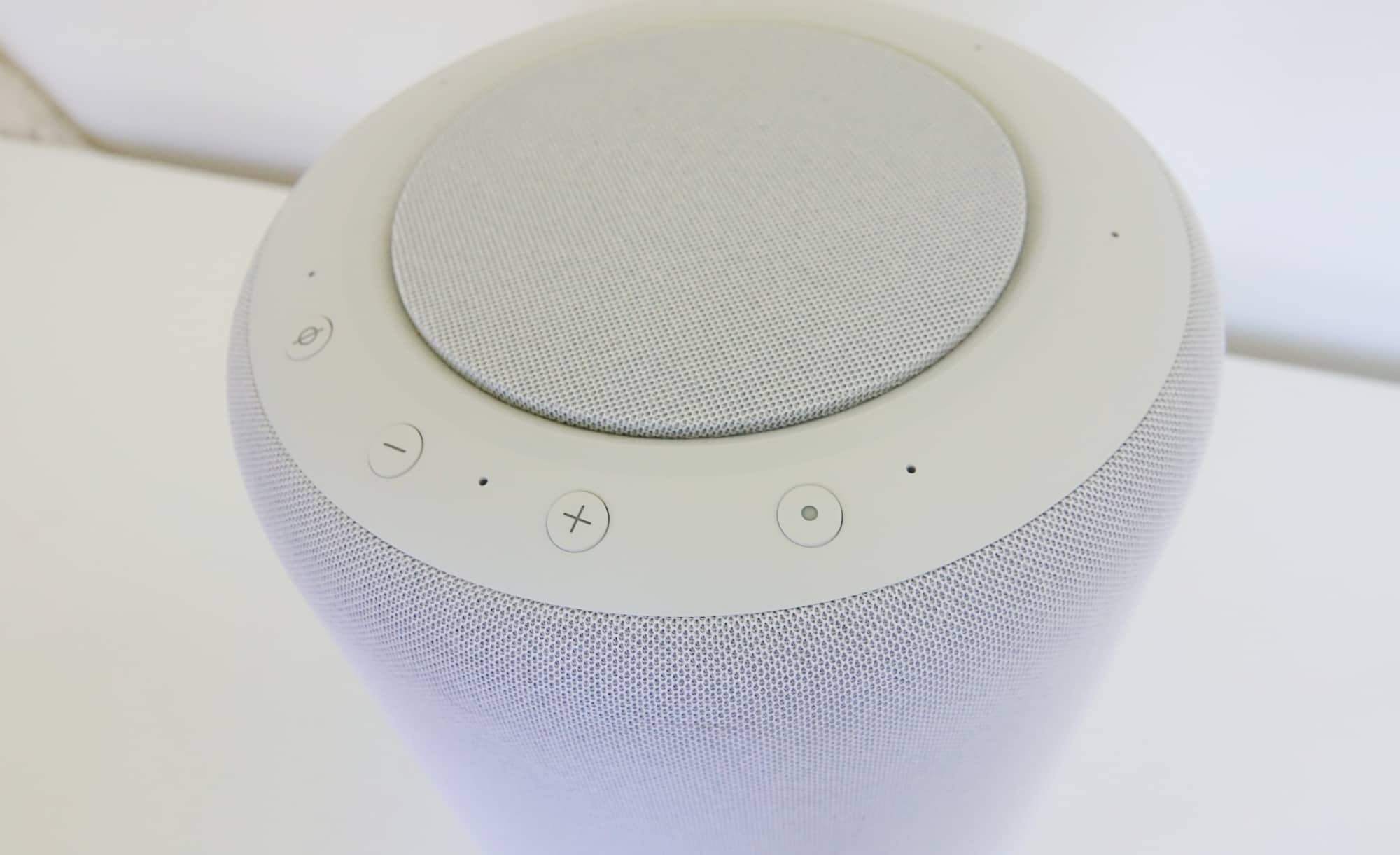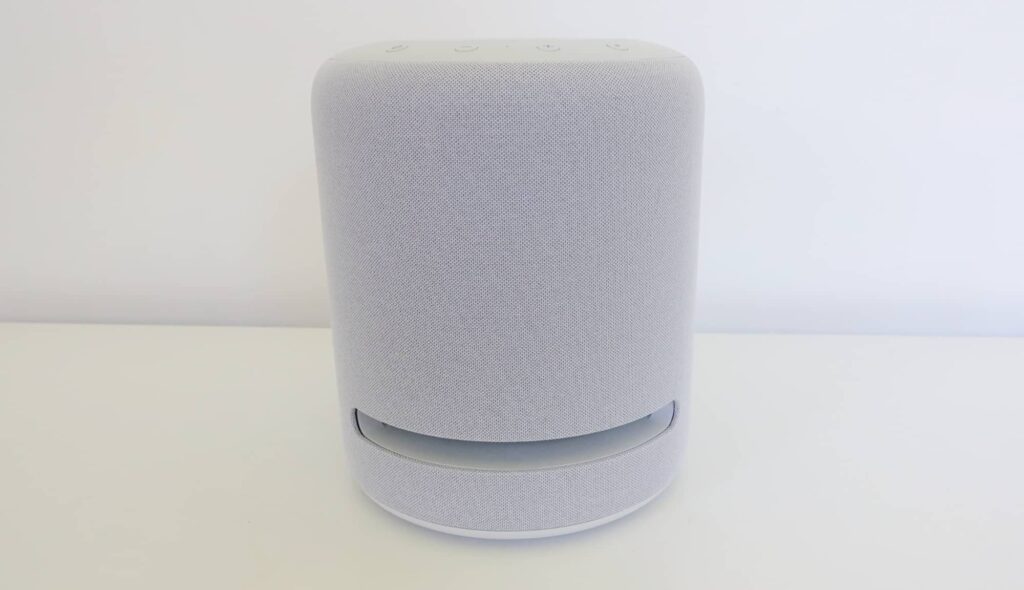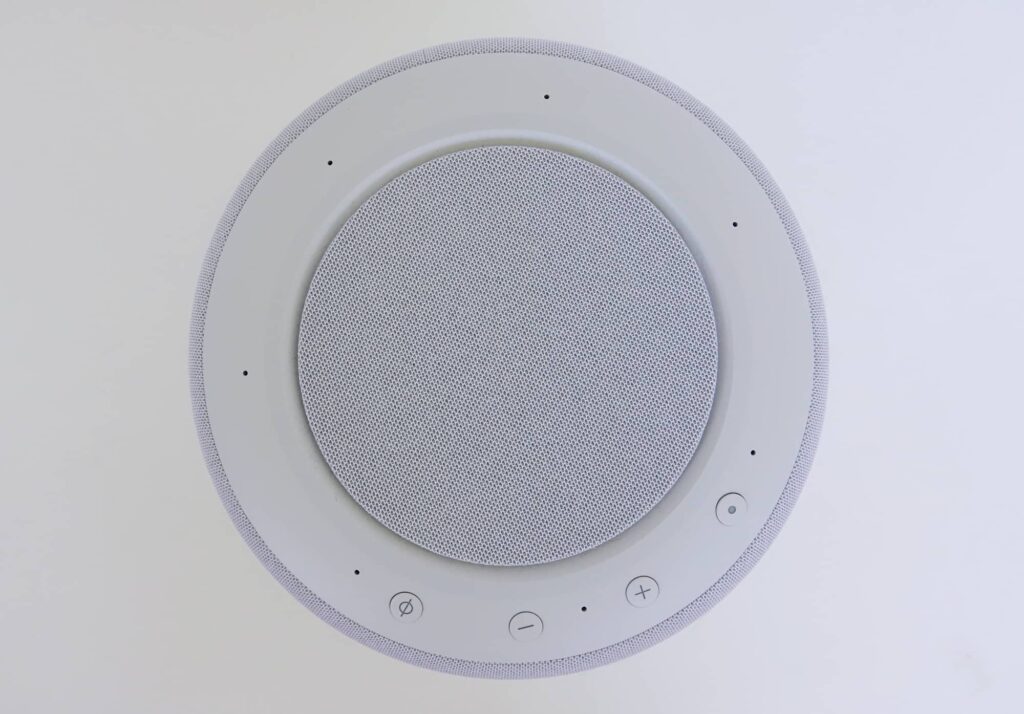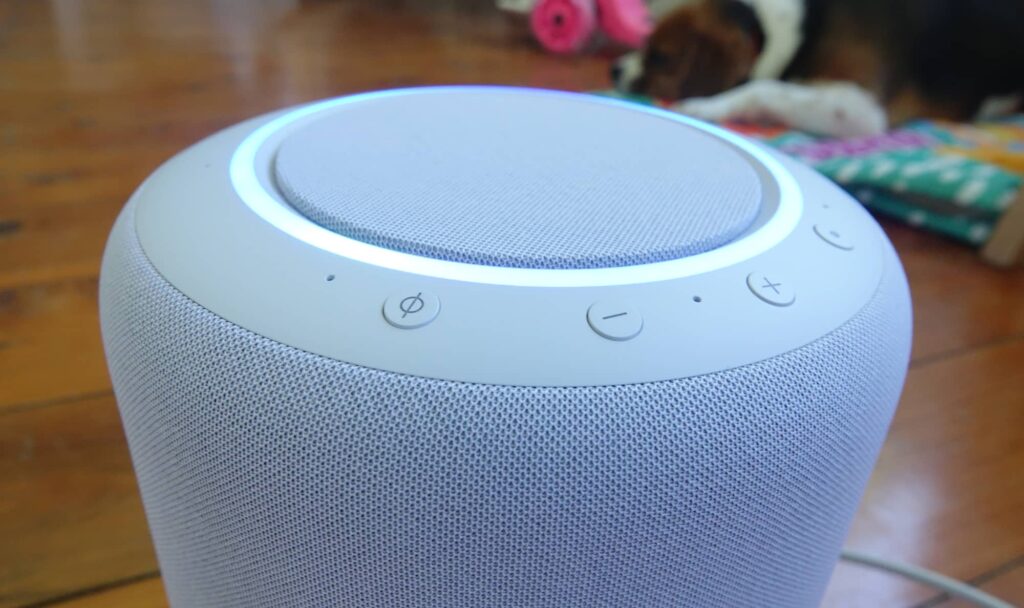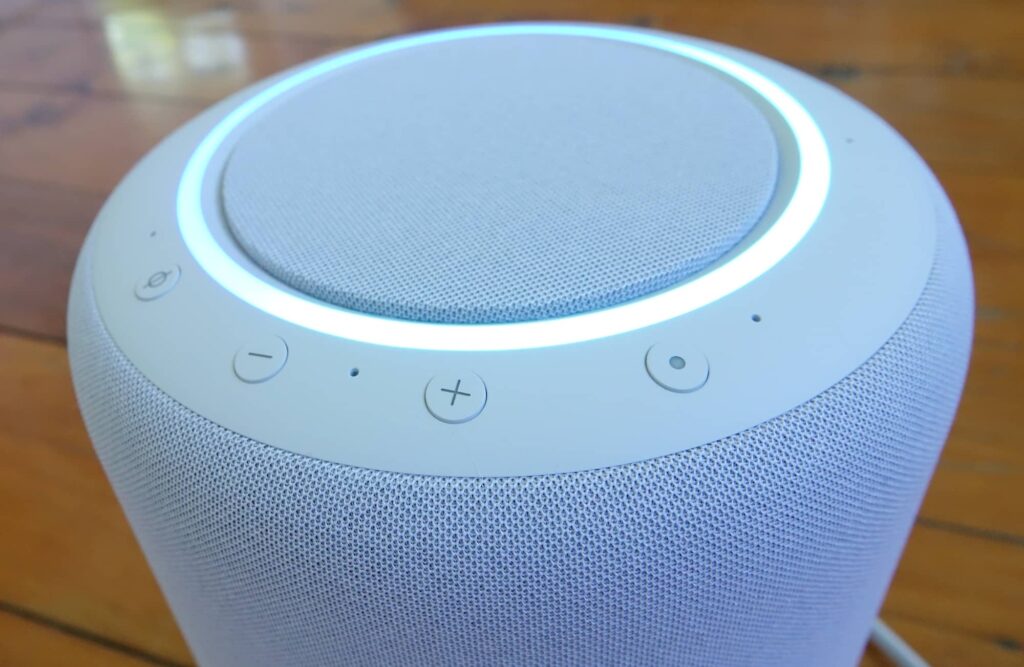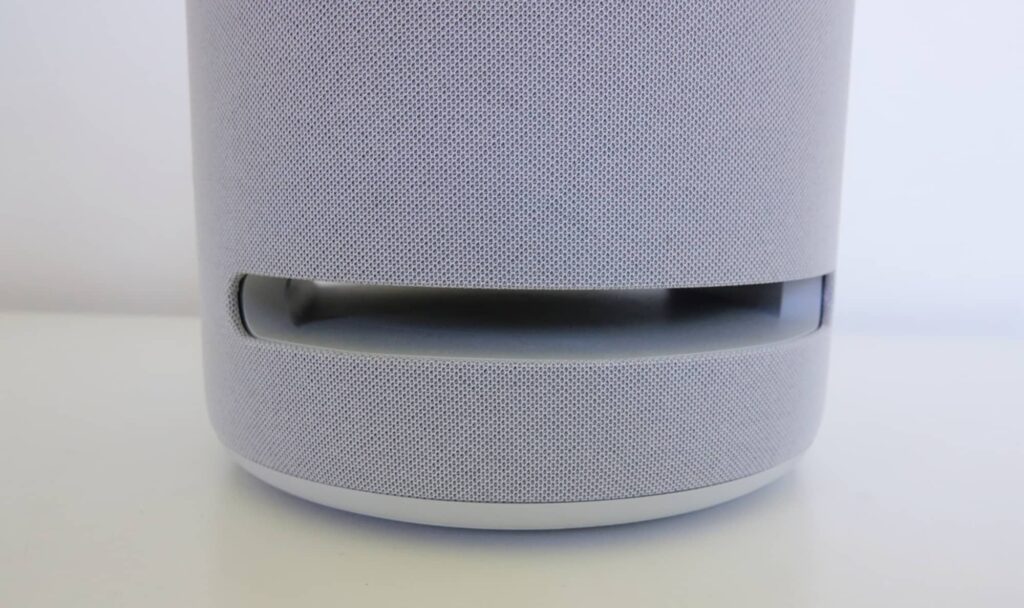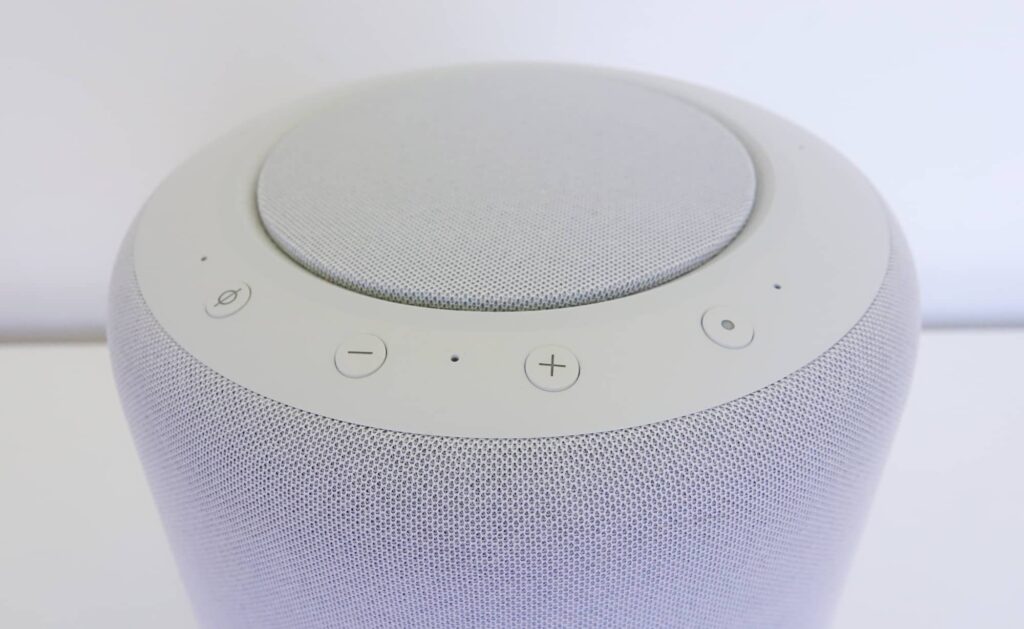Quick review
The good
The not-so-good
Amazon’s meaty speaker isn’t like its other models. The big Echo Studio can make an impact on sounds, but it’s not always easy to control. Hey Alexa, can we fix that?
It’s not unusual to see a follow-up in products, and these can usually improve upon what the original aimed to do, giving it more features. A new computer typically has all the best features of the old one, with a new chip to give it oomph. New headphones are very likely to follow that formula, as is new anything-else in gadgets.
Sometimes, though, the differences are hard to spot. Sometimes you may not even be sure you’re getting something entirely new in the first place. With Amazon’s second-gen Echo Studio speaker, it’s a little bit like that. It looks the same Echo Studio launched back in 2019 in Australia and doesn’t appear to be a whole lot different, even if the world of streaming has changed over the past few years.
In the past couple of years, we’ve seen the quality of streaming music go up, and support for spatial audio roll out, providing a little more in what you listen to.
And that’s exactly where Amazon’s second-gen Echo Studio is pitched, offering a spatial sound for folks looking for that, complete with Amazon’s Alexa smart assistant. Is this the versatile spatial smart speaker you might be looking for, or does it need work in a gen three?
Design and features
Built very much like its original, the Echo Studio is a cylindrical speaker that comes off looking less like a tall tube and more of a slightly flatter and pudgy one.
That’s probably unfair, because quite a few speakers look this way, but the Studio sticks with the old look that was a much taller and wider original Echo Dot rather than the newer spherical speakers you can find in the Echo range.
Inside, you’ll find three 5.1cm mid-range speakers, a 2.5cm tweeter, and a 13.3cm woofer, so it’s not a small system. There’s also some processing capability for the 3D sound, which is largely the big new feature of the range, harnessing digital audio processing to make a sound bigger and wider.
It’s not just a speaker, though. The Echo also contains support for Zigbee and Matter smart home gear, if you’re opting to upgrade the home later on, and there’s also support for Amazon’s Fire TV sticks to turn this into a TV speaker of sorts, if you have one of those. If you don’t, you can opt for plugging in using an optical Toslink connection, or even using a 3.5mm jack, because that can be found here, too.
Much of that is part and parcel for what Amazon offered in the original Echo Studio a few years ago, with the new effort largely about that whole spatial audio thing.
Some of the best spatial albums sound different and more dimensional than their respective stereo cousins, and you not only need a service that plays them, but also a device to play them on. Headphones typically do the trick, but spatial speakers are a different thing altogether, and that’s largely what the new Echo Studio is all about. Kinda sorta.
Of course, to get it to play spatial music, you need to get it to play anything in the first place.
In-use
Much like other Amazon Echo speakers, using the Studio either requires an app or your voice, and there’s really no middle ground here.
Use the Alexa app and trigger songs and media that way, which can be a touch limited, so you might want to build a playlist in your music service and have it call it by name, something we do in our routines.
Alternatively, there’s always talking to Alexa, which sometimes gets it right, but other times gets it completely entirely wrong, and just makes you tear your hair out, even if you don’t have a whole lot left in the first place.
While I start working on tearing hair in places beyond my head, trying to have it play the original movie version of “So Long and Thanks For All The Fish” is one test I’m not keen to try again. Many songs are fine, and provided you know the artist, you should be able to say “Hey Alexa, play by
Sometimes, though, Amazon doesn’t make it easy.
If you’re not using Amazon Music Unlimited (who is?!) and default to another service, Alexa will still try to find it on Music Unlimited and remind you that you don’t subscribe, even when you’ve made it clear you subscribe on another service. Other times, it just won’t work out how to join the dots. You’ll repeat the request several times and be left hairless in one part of your body, and realise it might be easier if you could just ask for something else instead.
A few years in, the usability issue with Amazon speakers is it doesn’t always get it right, and the app doesn’t let you explore other services in the way a Sonos speaker does.
It seems to be getting worse. Alexa is typically fine at asking to sing you a song and to play the routine you set up for your kids on the Echo you left in their room as a sort of musical alarm.
But asking her for a song that may have one or more versions? You’re largely left to your own devices to work out how to get an Echo playing the exact album and song you want, and that makes using this device less than easy.
Performance
The good news is when you do get it going, the Echo Studio sounds pretty good. Granted, it’s not the complex speaker system like what we can find in an Apple HomePod, and there’s absolutely no size difference between it and the original Echo Studio, either.
Really, the differences come off as being a paint job of sorts. But the performance still looks to impress, provided you have the right music service.
For Amazon, “the right music service” is its own, because much like how the HomePod Mini tends to handle music requests better if you have a subscription to Apple Music, the Echo Studio handles spatial only if you have Amazon Music.
At least it’ll talk to Apple Music, Spotify, as well as Amazon Music, so that’s something, and a great way to get started with our sound test, which is on Apple Music and Spotify, and tested with Apple Music.
That starts with electronic, which delivers a deep and bassy sound with solid and thick mids and highs. It’s a spacious sound that doesn’t quite deliver the Atmos-enabled dimensionality we were hoping for, but the service might answer why.
Without Atmos, though, the sound is spacious enough, delivering a great soundstage that offers a bigger sound than it should.
It’s a feeling that works throughout most of what our Pickr Sound Test pumped through, be it the well structured wide sound from of Ariana Grande’s “Into You” and the tight snap of the bass in Mark Ronson’s “Uptown Funk”, with the lows really extended and delivering in FKA Twigs’ “Two Weeks”.
There’s a good solid sound in the Echo Studio, and it pumps nicely.
Even in rock and jazz, it’s a sound that’s easy to like. Big and bold, the Echo Studio is a solid sounding speaker that can sell you.
Regardless of what we pushed through the Echo Studio, the sound was big and meaty, with plenty of depth to work with. It was interesting we didn’t quite get the spatial difference Amazon talks about specifically from the service, but we didn’t really need to: the speaker still offered a large and vibrant sound enough to impress upon the depth of audio on any small space.
We wish it was easier to control, and if it had AirPlay 2, it would be even better, but it’s still good, still good.
Value
One area that feels like Amazon has delivered acceptably is the price, which sees a speaker as big as Apple’s HomePod and a little larger than the Sonos One for a price smack dab in between both.
Priced at $349 in Australia, Amazon is charging a little more than the $319 Sonos One and a touch less than the recently refresh $479 Apple HomePod.
It’s a speaker that feels attractively priced, particularly if you’re after a spacious sound in the Amazon Alexa ecosystem, which so many gadgets support. It even manages to be a better deal than Sony’s 360-focused speakers, which don’t quite deliver as nice a spatial play as this one.
What needs work?
But it’s not all perfect.
Controlling your Echo Studio can be a challenge, because sometimes Amazon completely messes up and doesn’t have a clue what you’re talking about, but if there’s one thing we’d absolutely change, it’s Amazon’s limitation for spatial audio: it needs to be expanded.
Amazon may well have a form of spatial audio in its Amazon Music service, but it isn’t alone, and it should be compatible in the speaker to any service with it. We’d expect Spotify to launch spatial in some form later this year given Android spatial support is on the way, but even if it did, it seems like the Echo Studio will only play spatial through its preferred service, and that’s just frankly not good enough.
Newer earphones are supporting spatial, and while they may not be head-tracked (yet) like the Apple ones, they still support the dimensional sound. Speakers should be the same.
Worth noting, we’re not sure if this is an Apple-problem or an Amazon-problem, but it is definitely a problem, and one of the first things that needs work. You shouldn’t have to subscribe to a specific service to get a feature like this, especially if your current service already does it.
The other quibble is one for folks who already own an Amazon Echo Studio, because short of just adding a second for stereo sound to your collection, there’s literally zero reason to upgrade to this model. It may as well be a splash of paint, going from black to white (though you can still find the black model if you want).
Final thoughts (TLDR)
There are a lot of reasons to consider the Echo Studio, though many of them will come from people living inside Amazon’s ecosystem. If you already have an Echo or two or three, and maybe you have an Amazon Music subscription (you won’t be in a crowded group there), it’ll make sense. Spatial sound for Amazon Music customers, and all that jazz.
Anyone else looking for a cost effective speaker with a big sound can find it here, though it won’t be for everyone.
People who prefer more control might want to look to a different speaker, such as a a HomePod or a Sonos, the former of which is easily controlled by an iPhone or Apple-anything, and the latter of which can take its instructions on just about any device at all, Android, iOS, Windows and Mac. Sonos makes it a lot easier than Amazon, and the app and usability still needs some work.
It’s a shame, too, because the speaker is capable. There are some great features worth taking advantage of in the Echo Studio, such as how it can work as a speaker for a Fire TV device, and that it can really deliver a lovely soundstage, provided the source is right.
But in many ways, the platform lock for spatial audio on Amazon’s own music service is a little like a self-own: spatial is available on two platforms, but this speaker only does one, and without it, this speaker is just like it used to be. That’s not bad, but it’s also not a super amazing win, which is largely what it needs to be given everything else coming out now.
If you live in the Amazon world, you may well love this big and bold speaker. But Echo speakers support more than just Amazon, with Spotify and Apple Music there to name a few, and neither get the additional spatial feature, leaving this as just a big and bold speaker with nothing extra amazing in the end.
